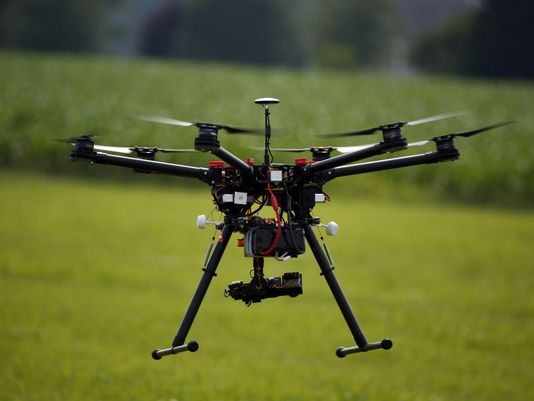Source: Bart Jansen, USA TODAY
WASHINGTON – The first comprehensive federal rule governing drones takes effect Monday, when government and industry officials say thousands of pilots of remote-controlled aircraft are eager to start their engines.
Earl Lawrence, director of the Federal Aviation Administration’s drone office, said 3,351 people signed up to take a test of aviation knowledge Monday —the first day possible — to certify themselves as drone pilots. Another hint of the pent-up demand is that 20,000 commercial drone operators have already registered to start flying, in anticipation of passing those tests that become available Monday, he said.
“That’s a good indication we’re going to have a lot of people and a lot of aircraft operating from day one,” Lawrence told a group of dozens of congressional staffers Wednesday.
The rule governing drones weighing up to 55 pounds will largely replace the special permission that FAA granted in recent years to 5,542 applications for commercial uses of drones, such as for aerial photography, utility inspection or crop observation. Special waivers could still be granted.
But the rule basically allows pilots who pass the test to fly whenever they want up to 400 feet in the air during daylight hours while keeping the aircraft within sight of the pilot and away from other aircraft.
Hobbyists have always been allowed to fly under similar guidelines, but commercial pilots have had to file cumbersome applications for special permission — until now.
“Monday is a big day,” Lawrence said. “We’re expecting it to blossom tremendously.”
The rule released in June was a long time coming. Congress ordered FAA in 2012 legislation to have drones sharing the skies with passenger planes by September 2015. The agency wasn’t able to move that quickly, but just having a daytime rule for small drones is expected to boost the industry in ways advocates can’t calculate.
A trade group, the Association of Unmanned Vehicle Systems International, estimated in 2013 that drones could add 100,000 jobs and $82 billion in economic activity by 2025. At the panel discussion Wednesday, manufacturers and operators said those figures are likely far short of what could happen even before drones are allowed to fly routinely at night or farther than the pilot can see.
“Those numbers are indeed tired at this stage of the game,” said Brian Wynne, the trade group’s CEO. “Because of the way they were put together, they undershoot the potential quite dramatically.”
For example, Jesse Kallman, director of regulatory affairs for Airware, a San Francisco-based company developing software to guide drones, said major insurance companies alone could train tens of thousands of workers to use drones to assess claims in damaged areas.
Brendan Schulman, vice president of policy and legal affairs for DJI, a Chinese drone manufacturer with an estimated 70% of the worldwide market, said new uses emerge every day, such as research flying a drone through a whale’s exhale to study the animal’s health, pregnancy and migratory patterns.
“I think we’re going to see a huge influx of investors,” said Diana Marina Cooper, vice president of legal and policy affairs for PrecisionHawk, which has been researching with FAA the use of its drones to monitor agriculture.
Lawrence, the FAA official, cautioned “a few things need to be worked out” before allowing drone deliveries in downtown Washington, D.C. The next step for FAA will be a proposed rule expected by December for flying safely over people who aren’t associated with the flight, which is now generally discouraged, and then a proposed rule expected a year from now for expanded flights such as at night.
Even under the comprehensive rule that takes effect Monday, Lawrence said FAA will issue waivers for night flights and flying farther away than the pilot can see, such as farmers scanning crops in remote areas, if the applicants demonstrate how they’ll reduce risks.
“We’re trying to get as many operations that we know we can safely allow in the system allowed and done now,” he said.

